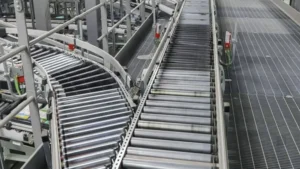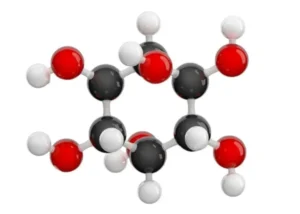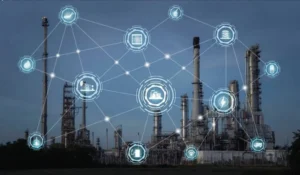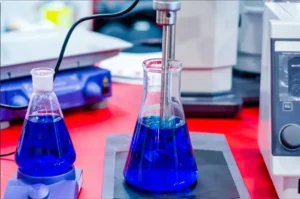Welcome to the world of induction furnaces. Sederhananya, an induction furnace is an electrical furnace that uses the principle of electromagnetic induction to convert electrical energy into thermal energy, thereby heating or melting metals. It’s like a very powerful, efisien “microwave oven,” but one that only works on conductive materials (primarily metals).
Core Principle: Electromagnetic Induction Heating
To understand an induction furnace, you must first understand the concept of “electromagnetic induction heating.” This principle is based on two key physical phenomena:
- Electromagnetic Induction (Faraday’s Law of Induction)
- The Joule Effect (Joule Heating)
Let’s break down this process:
Step 1: Generate an Alternating Magnetic Field
- One of the core components of an induction furnace is an kumparan induksi, which is wound from a hollow copper tube.
- When an alternating current (AC) of a suitable frequency (tinggi, sedang, or line frequency) passes through this coil, it generates a rapidly alternating magnetic field di sekitar kumparan.
Step 2: Induce Current in the Metal
- We place the metal to be heated or melted (known as the charge) into this alternating magnetic field (Misalnya, in a crucible placed inside the induction coil).
- According to the principle of electromagnetic induction, this constantly changing magnetic field “cuts” through the metal conductor, “inducing” an electrical current within the metal charge.
- This closed-loop current formed inside the conductor is called an “arus eddy” because its path resembles a whirlpool or eddy in water.
Energy Conversion: How Electrical Energy Becomes Heat
Now that we have electricity (arus eddy) flowing inside the metal, the next step is to turn it into heat.
This is achieved primarily through the Joule effect (also known as resistive heating):
- Any conductor (including the metal charge) has its own electrical resistance.
- When the strong eddy currents flow through the metal, they must overcome this internal resistance.
- In this process, electrical energy is efficiently converted directly into a large amount of thermal energy—an in-situ conversion—according to Joule’s Law (Heat Q = I^2Rt, where ‘I’ is current, ‘R’ is resistance, and ‘t’ is time).
A Simple Analogy:
Think of an electric stove coil or a toaster. When current passes through the high-resistance heating element, the element glows red and gets hot. In an induction furnace, the metal charge itself acts as the “heating element,” and the eddy current is the electricity flowing through it.
Secondary Effect: Hysteresis Loss
For magnetic metals like iron and nickel, there is an additional heating effect. The alternating magnetic field causes the tiny magnetic domains (like countless microscopic magnets) within the metal to rapidly flip back and forth. This internal “friction” also generates heat, which is called hysteresis loss. Namun, this effect disappears once the metal is heated above its Curie point (where it loses its magnetism).
Ringkasan: The Induction Furnace Workflow
- Power On: The power supply sends AC to the induction coil.
- Create Field: The coil generates a powerful, alternating magnetic field.
- Induce Current: The magnetic field penetrates the metal charge, inducing strong eddy currents within it.
- Generate Heat: The eddy currents overcome the metal’s resistance, generating immense Joule heat and causing the metal to heat up rapidly from the inside out.
- Melt: Heat continues to build until the temperature reaches the metal’s melting point, and the metal begins to melt.
Key Advantages of Induction Furnaces:
- Contactless Heating: Energy is transferred via a magnetic field, with no open flame or physical contact from a heating element, which reduces contamination.
- Internal Heating: Heat is generated directly within the metal itself, not transferred from an external source. This results in extremely high thermal efficiency and very fast heating speeds.
- Pengadukan Elektromagnetik: The forces created by the eddy currents in the molten metal automatically stir the liquid, ensuring a more uniform composition and temperature.







